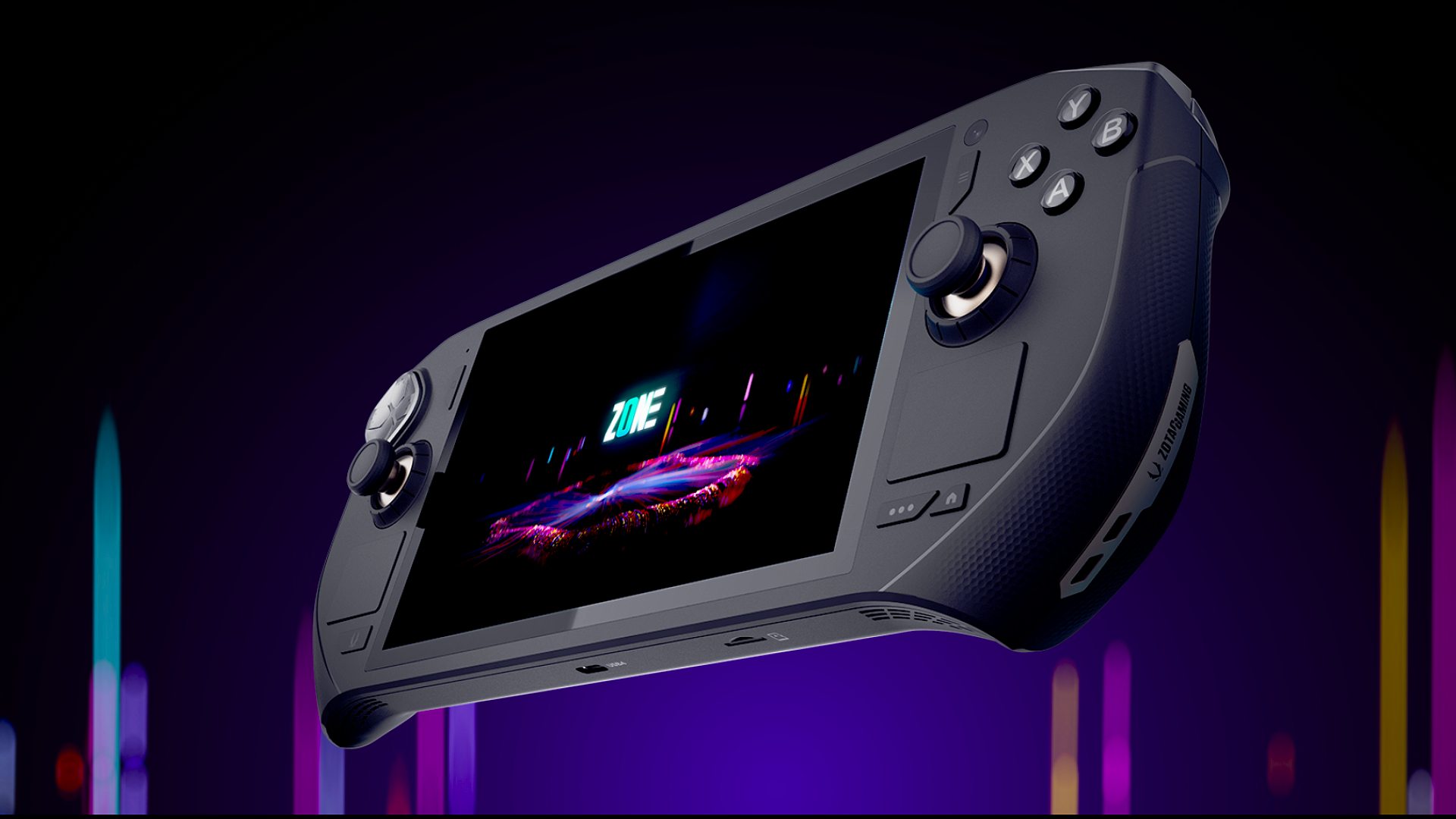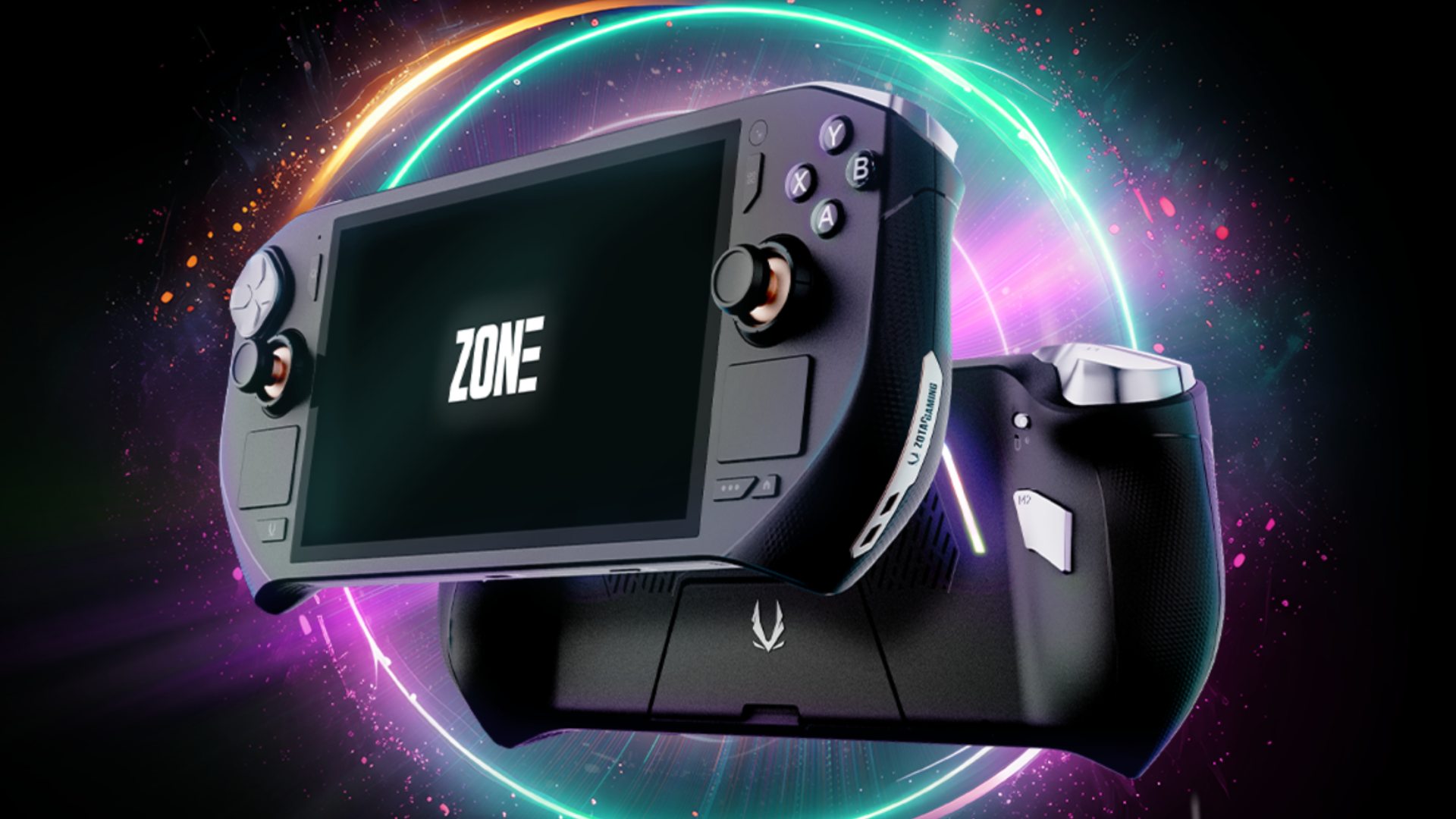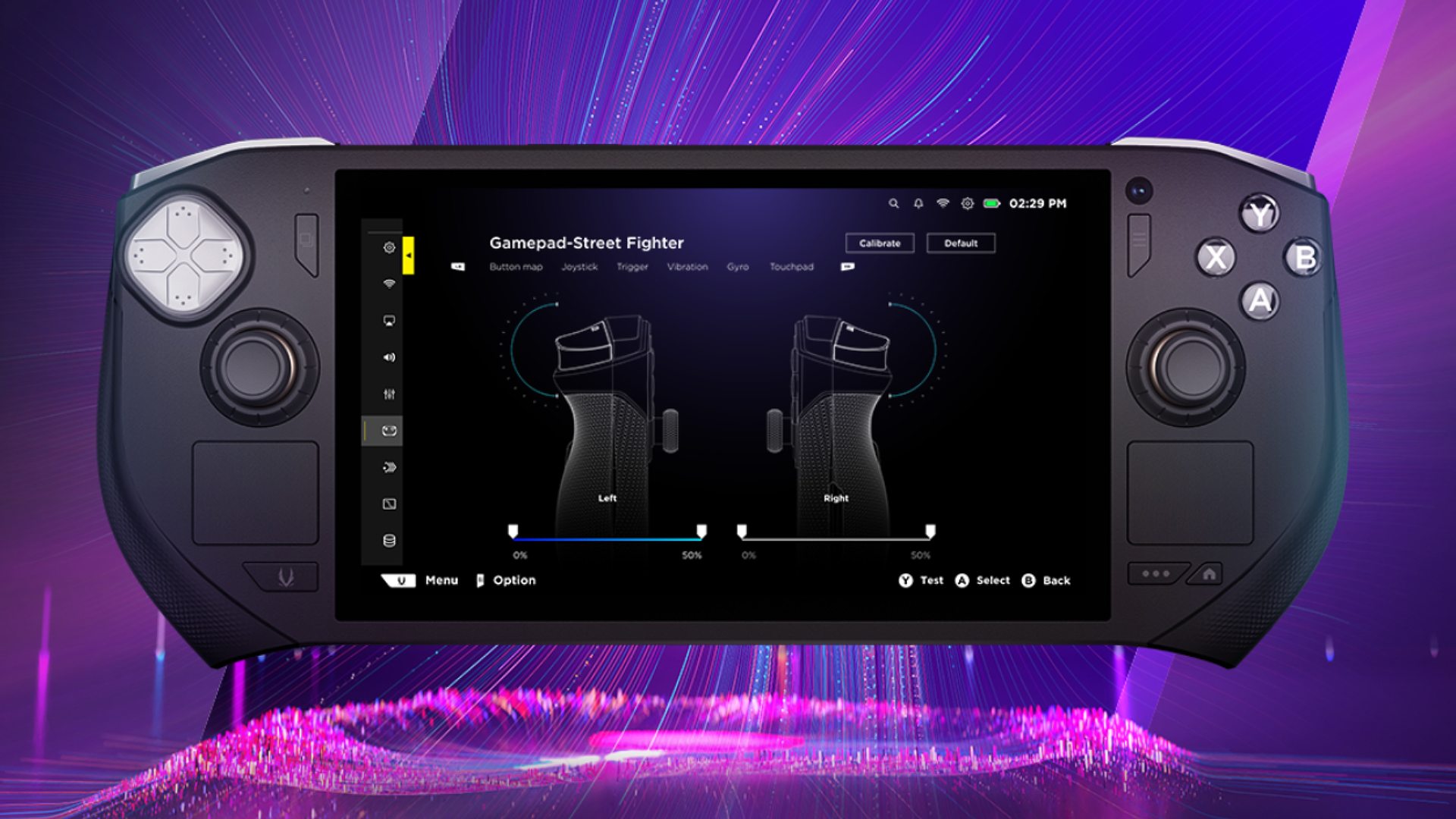The Zotac Zone just entered the handheld ring with a $799 price tag, but I’m scared it’ll become a punching bag
Zotac’s debut handheld has premium expectations on its shoulders

Recent updates
September 26, 2024 - My Zotac Zone review is now live, and my full rundown includes benchmarks and early impressions of the handheld. It's still early days for the Steam Deck rival, and the article below's point about pricing still stands, but the portable PC is off to a promising start.
I’ve been excited to hear more about the Zotac Zone since its announcement, as it’s poised to be a proper Steam Deck OLED rival thanks to its screen. The only issue is that the gaming handheld scene doesn’t wait around, and while the PC component company has seemingly settled on a $799 MSRP, many other main contenders are wearing much lower price tags.
Pre-orders aren’t quite live yet, but the Zotac Zone has officially taken to the best gaming handheld battlefield with a $799 asking price. That places it in the same thing as the Asus ROG Ally X, and it does admittedly pack more of a performance punch than the Steam Deck OLED thanks to its AMD's Ryzen 7 8840U APU. In other words, its price isn’t completely outrageous when it comes to premium portables, but my concern is that it’s targeting an audience with devices in hand.
Zotac’s launch timing is also slightly unfortunate, as Antec just released its version of the Ayaneo Slide for a ridiculously low $499. The OG Asus ROG Ally also likes to frequently dip to near that same price point these days, which is bad news for the Zone considering its capabilities are on par with both devices on paper.
Should you buy the Zotac Zone?

The Zotac Zone is a premium portable through and through, but as a handheld reviewer, I’m looking for it to check three boxes. The first relates to its AMOLED screen, as at 1080p 120Hz, it should offer elevated specs compared to its competition. If you’re looking for deeper blacks and superior contrast but crave ROG Ally screen specs, the graphics card maker’s device could be exactly what you’re looking for.
However, I find $800 to be a hard sell for that boon alone, and I think it’ll need a bit more than AMOLED tech to stand out. Thankfully, the Zone is kitted out with all the premium perks I’d expect a handheld at this price to possess, including hall-effect joysticks and dual-touchpads. As a delicious extra, the portable also has unique radial dials around its thumbsticks that can serve as a way to adjust things like volume. I’d be lying if I said this wasn’t the thing I was most excited about, as I’m a sucker for old-school analog vibes.
The third thing the Zone really needs on its side as it heads into battle is battery life, and the handheld has already lost the numbers game against the ROG Ally X. That’s to be expected since Asus’ newbie is rocking an 80Wh runtime whereas Zotac has stuck with a conventional 48.5Wh setup. When paying $800 versus around $400 for something like the Deck, I imagine many players will be expecting new releases to run for longer than an hour or two, but I suspect the portable will still come with the same capacity caveats.

So, should you buy the Zotac Zone? Well, maybe, as I view the handheld as a ROG Ally X alternative for people who prioritize visuals. You’ll still be getting performance on par with the Ryzen Z1 Extreme chip inside Asus’ devices and the Lenovo Legion Go but tied to hardware with similar premium perks to the Ayaneo Flip DS. What you won’t be getting for your money is the faster 24GB RAM or full-sized 1TB M.2 SSD within the ROG Ally X – two aspects that I think help justify Asus’ price point.
Sign up to the GamesRadar+ Newsletter
Weekly digests, tales from the communities you love, and more
I’m naturally saving any real Zotac Zone critique for our eventual review, as I’ll only know for sure how it holds up after testing. That said, I doubt it’ll disappoint me more than the MSI Claw, which FYI, I currently have in my lab.
Put it this way, the Zotac Zone might not be the cool kid at school due to its high price, but at least it’s not spending its lunch break jammed in a locker like the Claw.
Already got Valve’s handheld? Swing by the best Steam Deck accessories and best Steam Deck dock for fantastic add-ons. Alternatively, check out the best gaming laptop for machines with more oomph.

I’ve been messing around with PCs, video game consoles, and tech since before I could speak. Don’t get me wrong, I kickstarted my relationship with technology by jamming a Hot Wheels double-decker bus into my parent’s VCR, but we all have to start somewhere. I even somehow managed to become a walking, talking buyer’s guide at my teenage supermarket job, which helped me accept my career fate. So, rather than try to realise my musician dreams, or see out my University degree, I started running my own retro pop culture site and writing about video games and tech for the likes of TechRadar, The Daily Star, and the BBC before eventually ending up with a job covering graphics card shenanigans at PCGamesN. Now, I’m your friendly neighbourhood Hardware Editor at GamesRadar, and it’s my job to make sure you can kick butt in all your favourite games using the best gaming hardware, whether you’re a sucker for handhelds like the Steam Deck and Nintendo Switch or a hardcore gaming PC enthusiast.


